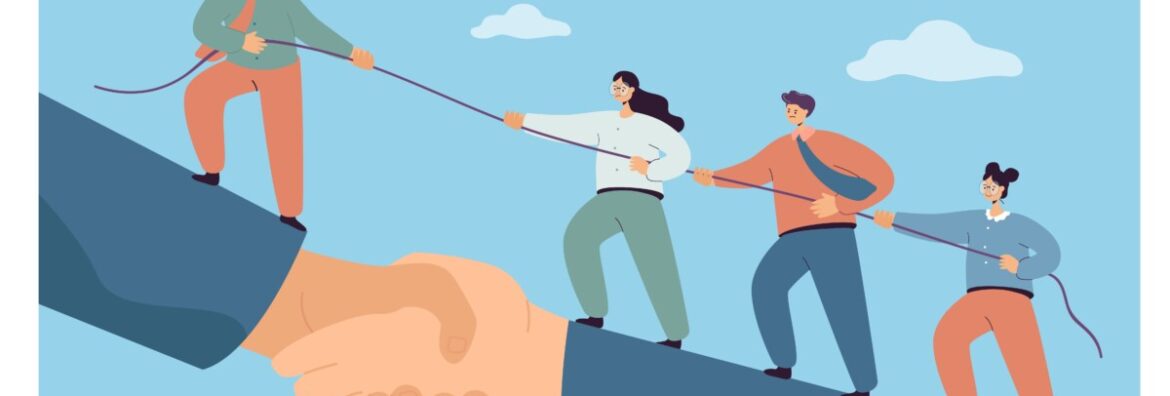Leadership is the invisible hand that creates, nurtures, and guides the culture of any organization. Think about it: when a leader enters the room, the energy shifts. Whether that shift is toward positivity, collaboration, and trust—or toward tension and uncertainty—depends largely on how that leader embodies and promotes the values of the organization. Leadership doesn’t just steer operations; it molds how people interact, solve problems, and engage with their work.
It’s no secret that strong leadership is the foundation of a healthy organizational culture that elicits the behaviors needed to drive your strategy. But how exactly does leadership shape culture? How can organizations ensure that their leaders are contributing positively to that culture? Let’s explore.
The Role of Leadership in Shaping Organizational Culture
When we talk about organizational culture and leadership, it’s impossible to separate the two. Culture is essentially the DNA of an organization—the shared values, beliefs, and norms that influence everything from decision-making to employee behavior. Leadership, on the other hand, is the expression of that culture through action and a key mechanism of reinforcing and rewarding desired behaviors.
Leaders are the embodiment of what an organization truly values. When leaders communicate openly, demonstrate integrity, and encourage collaboration, they reinforce a culture that values trust and transparency. For example, a leader who makes time for regular check-ins with their team, asks for feedback, and acts on that feedback is showing that they prioritize open communication. This behavior becomes a model for how employees should interact with each other.
Conversely, when leaders fail to align their actions with the organization’s stated values, it can breed confusion and disengagement. Imagine a company that prides itself on innovation, yet the leadership team discourages new ideas or shoots down creative solutions. This disconnect sends a clear message: innovation isn’t truly valued here, and that misalignment can erode trust and morale.
In short, leadership defines, transmits, and sustains organizational culture by modeling the behaviors they want to see. This is why leadership development is so crucial for organizations that want to maintain a healthy, dynamic culture.
Utilizing Leadership Development Surveys to Assess Impact
So, how do you ensure your leadership is effectively shaping your organizational culture? That’s where leadership development and the assessment of leaders comes in.
Leadership development assessments typically include surveys which can be powerful tools designed to gather feedback on how leaders are perceived within the organization. They typically assess various aspects of leadership, such as communication skills, decision-making, emotional intelligence, and how well leaders embody the company’s core values. Think of these surveys as a mirror, reflecting how leadership behaviors are impacting the culture.
For instance, a leadership development survey might ask employees, “Do you feel your manager provides you with the support you need to succeed?” or “Does leadership promote an environment where new ideas are encouraged?” The responses to these questions provide actionable insights into leadership strengths and areas for improvement.
The beauty of leadership development surveys is that they don’t just highlight where leaders are falling short—they also reveal their strengths. Identifying these strengths is just as important because it allows organizations to build on what’s working and replicate successful leadership behaviors across the board.
Once the data is in, the real work begins. Surveys aren’t just about gathering feedback—they’re about taking that feedback and using it to create targeted leadership development strategies.
The Strategic Function of Leadership Development
Interpreting survey results and turning them into meaningful action can be a challenge for leaders. This is where external support can come into play.
Leadership development consultants help organizations make sense of survey data by identifying patterns, trends, and areas of concern that may not be immediately obvious. For example, if a survey reveals that employees across multiple departments feel disconnected from leadership, a consultant can dig deeper to understand whether this is a communication issue, a lack of visibility from leadership, or something else entirely.
Once the issues are identified, consultants work with the organization to create tailored development plans that address specific needs. This might involve leadership coaching, workshops, or strategic retreats focused on areas like emotional intelligence, communication, or conflict resolution. The goal is to equip leaders with the skills and insights they need to strengthen the organizational culture.
But consultants don’t just hand over a development plan and walk away. They help implement these strategies and track progress over time to ensure that the initiatives are having the desired impact. In essence, they act as a guide through the process of transforming leadership and, by extension, the culture.
Hypothetical Scenarios: Leadership Development in Action
To see this in action, let’s consider a hypothetical scenario. Imagine a mid-sized tech company that prides itself on being agile and innovative. However, recent feedback from a leadership development survey reveals that employees feel their leaders are risk-averse and reluctant to embrace new ideas.
A leadership development consultant is brought in to interpret the data. After analyzing the results, the consultant recommends a series of leadership workshops focused on encouraging creative problem-solving and fostering a more open, risk-tolerant mindset.
The workshops include role-playing exercises where leaders practice responding positively to unconventional ideas, as well as group discussions about the barriers to innovation within the company. Over time, the leaders start to adopt more open-minded behaviors, and the company begins to see an increase in innovative projects and employee engagement.
This is just one example of how targeted leadership development initiatives, informed by surveys and supported by consultants, can lead to meaningful cultural change.
Best Practices for Leadership Development and Cultural Enhancement
If you’re looking to enhance your organizational culture through leadership development, here are some best practices to keep in mind:
1. Select the Right Tools: Not all leadership development tools are created equal. Choose tools that align with your organization’s specific goals and culture. The Leadership Mosaic, for example, is an excellent option for organizations looking for comprehensive organizational culture assessment tools.
2. Customize Development Plans: Leadership development should never be one-size-fits-all. Tailor your development initiatives to address the unique challenges and opportunities within your organization.
3. Align Leadership with Organizational Goals: Ensure that your leadership development efforts are directly aligned with your company’s long-term goals. For example, if innovation is a core value, focus on developing leadership behaviors that encourage risk-taking and creativity.
4. Measure Impact Over Time: Leadership development is an ongoing process. Use regular surveys and other feedback mechanisms to measure the impact of your initiatives and adjust your strategies as needed.
By following these best practices, organizations can create a leadership development program that not only improves individual leaders but also strengthens the organizational culture as a whole.
Turning Insights into Action
Leadership shapes culture, and culture shapes success. By investing in leadership development, organizations can ensure that their leaders are not just managing day-to-day operations but are actively contributing to a culture that fosters growth, innovation, and collaboration.
Leadership development surveys and consultants are invaluable tools in this process. They provide the feedback and expertise needed to make meaningful, lasting changes that benefit both leaders and the broader organization.
If you’re ready to take the next step in developing your leadership team and enhancing your organizational culture, now is the time to act. Start by assessing your current leadership practices, gathering feedback, and building a development plan that will lead your organization to a brighter, more dynamic future.



